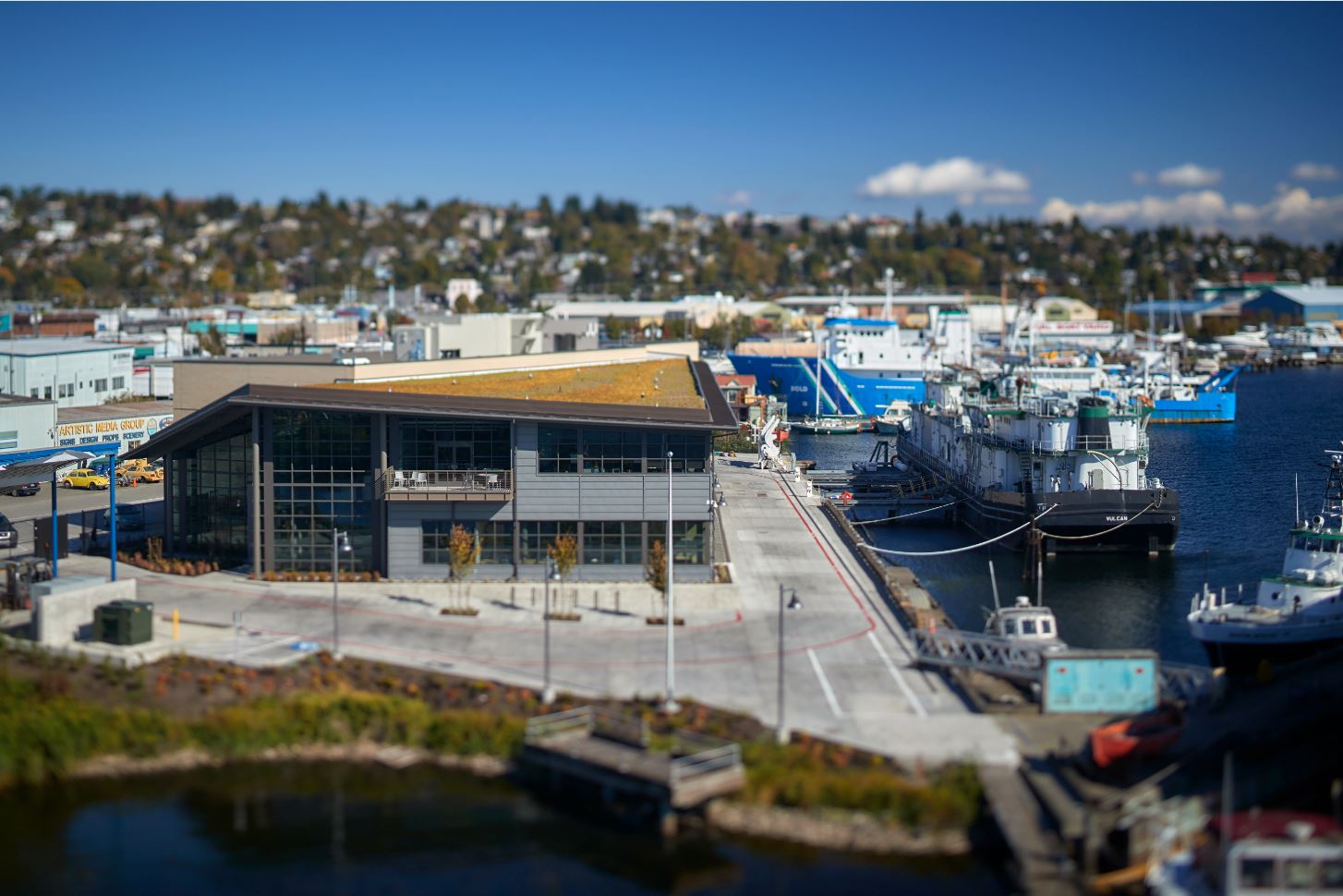 Photo courtesy Seattle Maritime Academy
Photo courtesy Seattle Maritime Academy Sarah Scherer, Director of the Seattle Maritime Academy, gestured out of the classroom window at the Ballard Bridge over the Lake Washington Ship Canal. “How many people drive across this bridge every single day and don’t know that 80 percent of the Alaska fishing fleet is docked right there at Fisherman’s Terminal?”
She was speaking to a growing problem in one of Washington’s largest (and highest-paying) industries: many maritime industry workers are nearing retirement, and there is a shortage of labor to replace them.
The average age of the maritime workforce was over 54 years old in 2013, according to the Washington Maritime Federation. The aging workforce is presenting an issue across trade industries, and Washington’s maritime industry is no exception. This “silver tsunami” of retiring workers is troubling news for the state, as the maritime sector generates $37.8 billion in combined direct and indirect revenue annually.
This is where the Seattle Maritime Academy (SMA) comes in. SMA, a school within Seattle Central College, prepares roughly 32-36 students every year for a career in maritime, and it seeks to create pipelines into this high-paying industry for younger students as well.

Maritime students go underway for the last time after their final for a cruise around the Sound. Photo courtesy Seattle Maritime Academy.
Since maritime sector jobs are regulated by the U.S. Coast Guard, SMA gives graduates an edge in entering this growing industry. Students take a nine month, hands-on program at SMA’s newly renovated facilities, preparing them for a career in either marine engineering or marine deck technology. Students then complete a 60 or 90-day internship, depending on their program, and leave SMA with their U.S. Coast Guard certification for a position on a vessel. These positions earn $45-75 thousand annually for starting salaries, usually working for about six months out of the year.
Scherer was passionate about SMA’s potential to strengthen the region’s middle class, even describing trade education as “the answer to generational poverty.” At SMA, students can get their Coast Guard certification and be on the road to a lucrative career in less than a year.
Scherer said one factor causing the shortage of young workers is lack of awareness about the profession. Maritime jobs used to be passed along through families, but this has become significantly less common, particularly as students have encountered increasing pressure in their K-12 education to pursue higher education after high school.
Lack of awareness is doubly an issue for people of color and women, who are severely underrepresented in the northwest’s maritime industry.
“We’ve told all these kids over and over and over again, ‘You have to go to college, you have to get a bachelor’s degree to be successful,’” said Scherer. “And it’s not true. There are many jobs where people don’t need to get a bachelor’s degree just in the maritime industry, let alone all the other trades, that people can make not just a good living, but a fantastic living wage job that has upward mobility.”
This is part of what makes the Youth Maritime Collaborative so important, according to program coordinator Marsha Dickgieser. The Youth Maritime Collaborative, a collection of public and private agencies including the Port of Seattle and Seattle Goodwill, seeks to “get the wheels turning” in students’ heads about careers in maritime.
This is done through hands-on learning at special events where employers showcase the kinds of careers students could pursue, as well as through “lunch and learn” visits to local schools. The Youth Maritime Collaborative is hoping to partner with Seattle’s Office of Economic Development to connect more high school students to internships with local businesses.
“When we go do some of these high school programs, and we ask, ‘How did this change your opinion of the maritime industry?’ a frequent answer is, ‘I didn’t know it existed, and now I know it’s an option,’” said Scherer. She stressed the importance of reaching students of color, particularly those from immigrant communities: “That’s part of what we’re focusing on in these high school programs, is getting them to understand that [maritime is] an option.”
While Scherer and Dickgieser are passionate about maritime as an option for young people, they were the first to admit that a career at sea isn’t for everyone. “The industry is not for the faint of heart,” Scherer explained, citing months spent away from friends and family, nonexistent cell service and hard work.
The women will also be the first to sing the praises of being a mariner, however. “The stuff you get to see—I mean, I’ve been all over the world,” said Scherer. “I’ve gotten to see things most people only get to dream about. Countless sunsets and sunrises, and the beauty of being humbled by realizing how small you are.”
Dickgieser added, “You learn a lot about yourself, and you create this comradery…the friendships and the weird little family you build while you’re away, you can’t really get that anywhere else.”
Even if young people aren’t interested in leaving dry land, there are still “lots of opportunities” in maritime, said Scherer. “You want to be an engineer, but you don’t want to go to sea? Go to Skagit Valley Community College and get a marine technician degree, which is working on engines and hydraulics and auxiliary systems on land.”
Maritime jobs are difficult, but if young people can handle the tradeoffs—months spent at sea working hard, but months spent on land enjoying their high salary—and if “they have a sense of adventure, there’s a great job waiting for them.”
